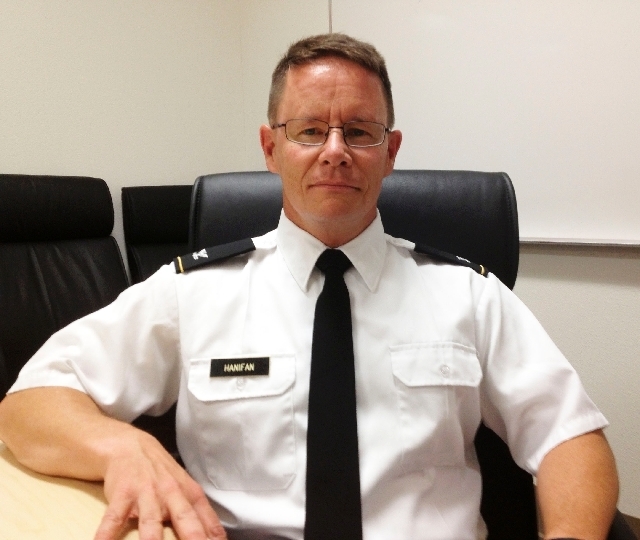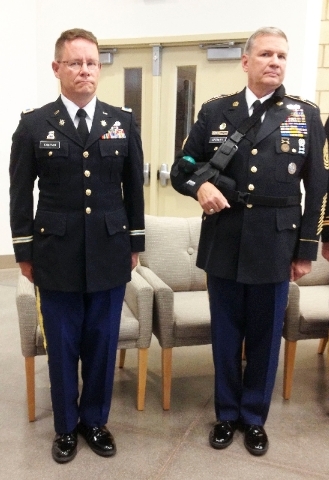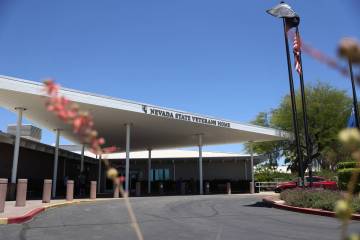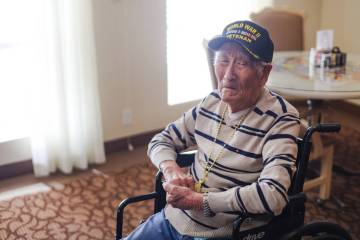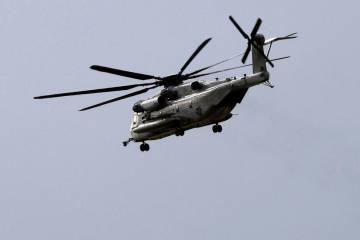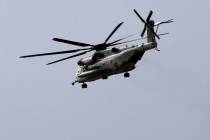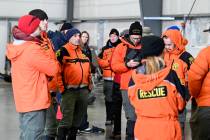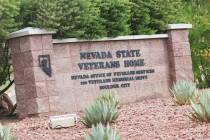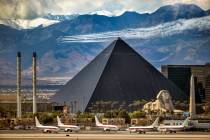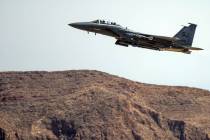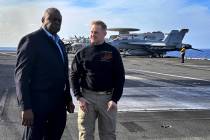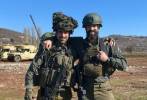New commander faces big challenges as Nevada Army Guard’s role changes
Col. Michael Hanifan is going to need all the skills he learned at West Point to lead the Nevada Army National Guard in a new direction when he takes command of it next month.
Hanifan, who graduated in 1986 from the U.S. Military Academy at West Point, N.Y., will take the reins Sept. 7 from Brig. Gen. Frank Gonzales to lead Nevada’s 3,200 National Guard soldiers as they transition from war fighting back to readiness training as the state’s weekend warriors.
Gonzales, of Las Vegas, is stepping down after nearly 37 years of climbing the ranks of the Nevada Army National Guard. He replaced retired Brig. Gen. Randall Sayre as commander in 2006. Both Sayre and Hanifan are from Fallon.
With the war chest drained from more than a decade of deployments by almost all of the Battle Born units to fight the war in Iraq and the one that continues in Afghanistan, the challenge for Hanifan will be to make the best use of what little funds are left after the Pentagon lops billions of dollars more from the nation’s reserve component budget to meet mandatory defense cutbacks under the sequester law.
“Some of the biggest challenges are just going to be keeping the funding for the training that we know that we still need to do,” Hanifan, 49, said Aug. 9 before presiding over a ceremony at the North Las Vegas Readiness Center for six lieutenants who graduated from Officer Candidate School.
“We’ve still got forces that are identified for mobilization” to support the war in Afghanistan as it winds down next year with the return of U.S. troops.
“Funding is going to continue to drop and we still need to maintain our readiness not only for going overseas but for also being able to respond for domestic emergencies,” he said. “It’s going to be a real challenge to try to maintain defending readiness and keep the troops happy as they go through training with fewer dollars.”
Hanifan said he doesn’t have exact figures on the Nevada Guard’s budget for the next fiscal year, which begins Oct. 1, because the National Guard Bureau won’t dole out those numbers until next month. Regardless, he said, “I know that this year was tighter than most years and I expect next year will be even tighter still.”
Among the innovative actions he is considering to stretch the Guard’s dollars is to combine training and other functions with the Army Reserve.
Hanifan said in light of strained budgets, military leaders have talked about integrating the Guard and Reserve into one combined force.
“That’s mostly being talked about doing it first on the Air (Guard and Reserve) side to see if it works, and then trying it on the Army side. And I think that would be wise as our funding really drops,” Hanifan said.
He said he has talked with Nevada’s adjutant general, Air Force Brig. Gen. Bill Burks, about the possibility.
Although the integration of Guard and Reserve would have to be done at the federal level, Hanifan said Burks agreed that “might be one of the best ways to operate as money gets tighter and tighter.”
“You could eliminate a lot of the overhead and combine a lot of the types of forces,” Hanifan said.
Without question, he said training is one area to overlap the two reserve components to get the most bang out of the military’s buck.
“I think there’s some great opportunities to work with them,” he said, referring to one joint-training venture involving an Army Reserve chemical decontamination response unit “a few years ago” that was canceled.
“Our plan was to integrate them into some of these same exercises. And, I think going forward that’s a wise thing to do,” Hanifan said.
“The only limitation they have is they cannot react to civil disturbances as well as we can because they’re not allowed by federal law to detain individuals but they can certainly help in response to emergencies, especially if they are local emergencies.”
Hanifan envisions not only joint participation with Army Reserve units in training exercises but also integrating them in their staff planning drills.
Army Reserve units that could help handle state emergencies include the chemical unit because the state Guard doesn’t have its own decontamination capability. Transportation units would also be assets because they can move large amounts of food, water, supplies and equipment from one location to another.
Not to be overlooked is the additional manpower Army reservists could shoulder in emergencies.
“If you had a flood or a fire those units could easily help out to fill sandbags and alert the population that they should leave their homes because of an inclement flood or a potential fire,” Hanifan said.
Contact reporter Keith Rogers at krogers@reviewjournal.com or 702-383-0308.



